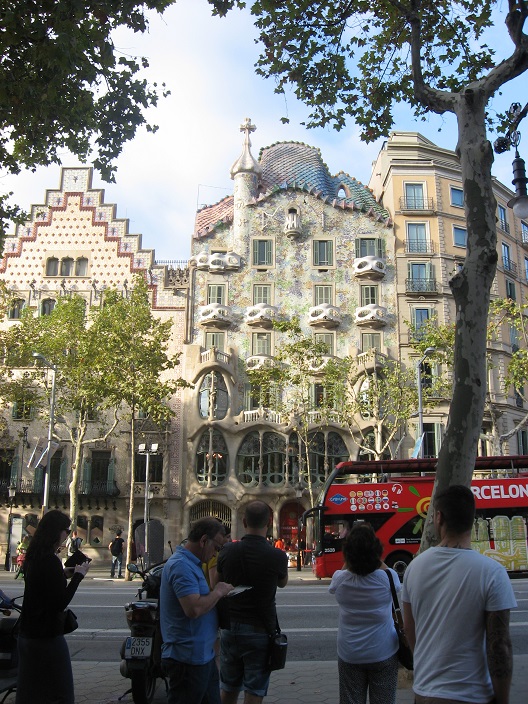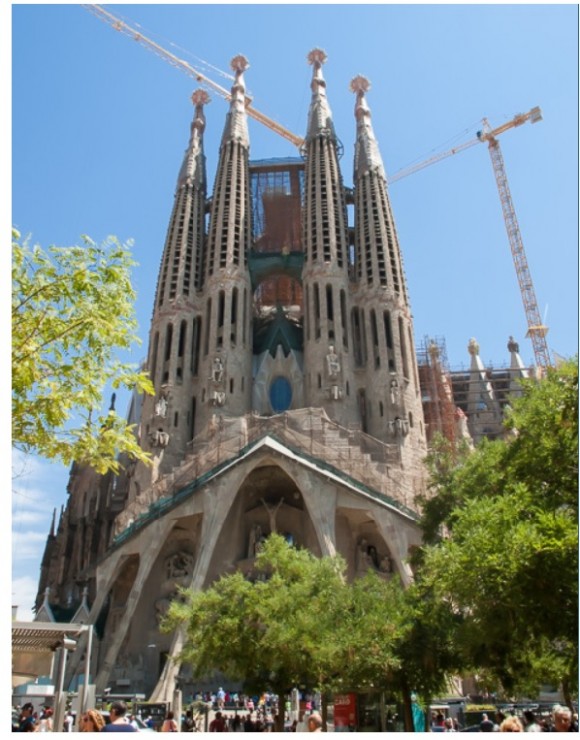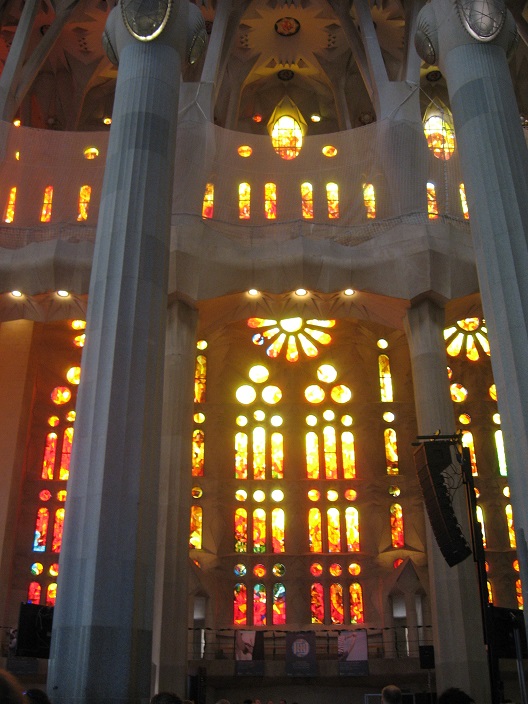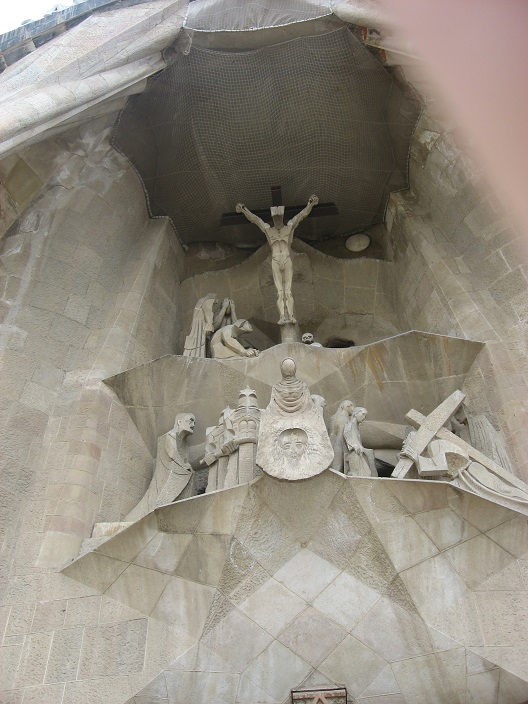Dear Commons Community,
Elaine and I spent the morning and early afternoon on two tours: one to Casa Batlló and the other to Sagrada Familia Basilica both designed by the architect Antoni Gaudi. One of the best known architects of the 19th and early 20th centuries, Gaudi was born in Catalana and is known for his natural designs employing curves and parabolas throughout his work which includes furniture, parks, houses, and the famous basilica Sagrada Familia (Holy Family) in Barcelona. For Gaudí, form and function were inseparable; one found aesthetic beauty only after seeking structural efficiency, which rules the natural world. “Nothing is art if it does not come from nature,” he concluded.
Casa Batllo
Casa Batlló (1904–1906). Commissioned by Josep Batlló i Casanovas to renovate an existing building erected in 1875 by Emili Sala Cortés. Gaudí focused on the facade, the main floor, the patio and the roof, and built a fifth floor for the staff. For this project he was assisted by his aides Domènec Sugrañes, Joan Rubió and Josep Canaleta. The facade is of Montjuïc sandstone cut to create warped ruled surfaces; the columns are bone-shaped with vegetable decoration. Gaudí kept the rectangular shape of the old building’s balconies—with iron railings in the shape of masks—giving the rest of the facade an ascending undulating form. He also faced the facade with ceramic fragments of various colours (“trencadís”), which Gaudí obtained from the waste material of the Pelegrí glass works. The interior courtyard is roofed by a skylight supported by an iron structure in the shape of a double T, which rests on a series of catenary aches. The helicoidal chimneys are a notable feature of the roof, topped with conical caps, covered in clear glass in the centre and ceramics at the top, and surmounted by clear glass balls filled with sand of different colours. The facade culminates in catenary vaults covered with two layers of brick and faced with glazed ceramic tiles in the form of scales (in shades of yellow, green and blue), which resemble a dragon’s back

Sagrada Familia
In 1883 Gaudí inherited the Sagrada Família from another architect, who had laid a traditional neo-Gothic base. Gaudí envisioned a soaring visual narrative of Christ’s life, but knew that the massive project could not be completed in his lifetime. For more than 12 years prior to his death in 1926—he spent his last year living at the site—he rendered his plans as geometric three-dimensional models rather than as conventional drawings. Though many were destroyed by vandals during the Spanish Civil War, those models have been vital to Gaudí’s successors.
“They contain the entire building’s structural DNA,” explains Mark Burry, an Australia-based architect who has worked on the Sagrada Família for 31 years, using drawings and computer technology to help translate Gaudí’s designs for today’s craftsmen. “You can extract the architectural whole even from fragments. The models are how Gaudí met the architect’s challenge: taking a complex, holistic idea and explicating it so others can understand and continue it after your death.”
Adrian Bejan, distinguished professor of mechanical engineering at Duke University, says the facades of the Sagrada Família are based on the golden ratio, the geometric proportion “behind all aesthetically pleasing art.”, whose “constructal law” states that design in nature is a universal phenomenon of physics. He calls Gaudí a forebear and a “tightrope walker on the line bridging art and science. He understood that nature is constructed by laws of mathematics. What is strongest is inherently lightest and most efficient, and therefore most beautiful.”

The sculpture and friezes on the outside are spectacular. The colors especially the massive stain glass windows dazzle like nothing one has ever seen in a church. The basilica is unfinished and work continues on it today with a projected completion date of 2026 although skepticism exists as to whether this is realistic.
Tony






I’m experiencing pangs from the memory of my trip last fall… enjoy the beauty!
Will do, Alyson,
Tony
Adrian,
Thank you so much for your posting on my blog.
Much appreciated!
Tony
Dear Tony,
Thank you for this excellent and beautiful article. This conclusion is priceless: “Nothing is art if it does not come from nature.”
On the same thought, here is the article that Comsol just published about my lecture at the Academy of Europe (9 Sept, Darmstadt), titled “The Human & Machine Species: Life and Evolution as Physics:”
http://www.comsol.com/blogs/evolving-into-a-better-design-humans-and-technology-as-one/
Comsol is a world leading design software company.
Adrian Bejan
Duke University